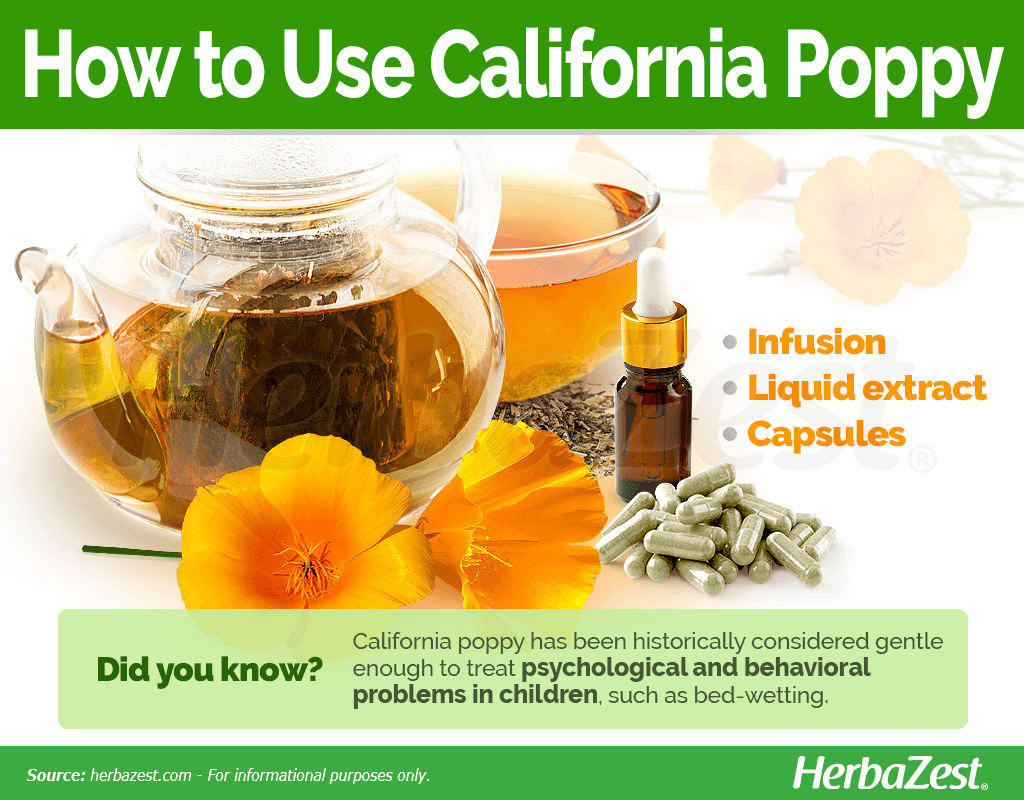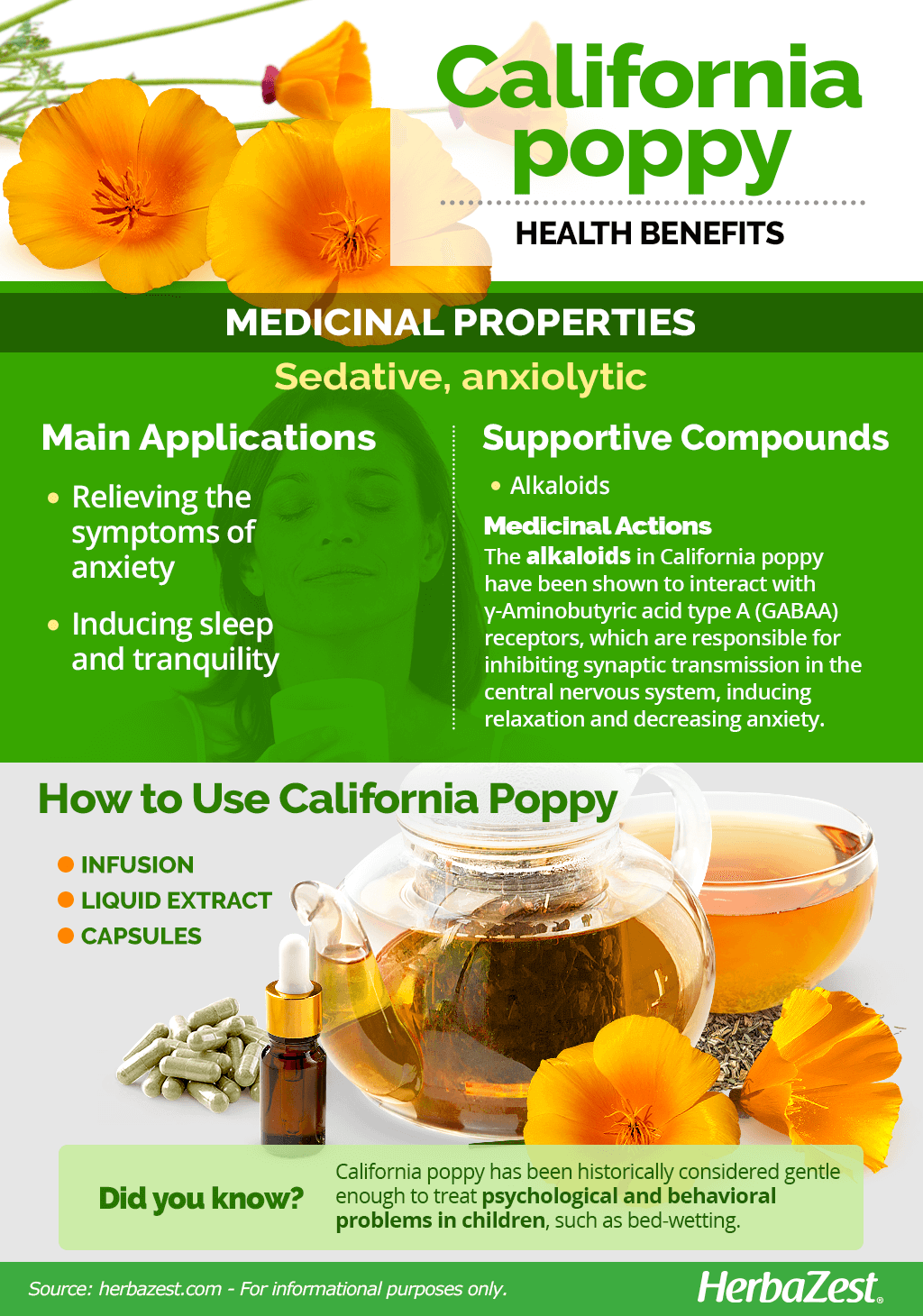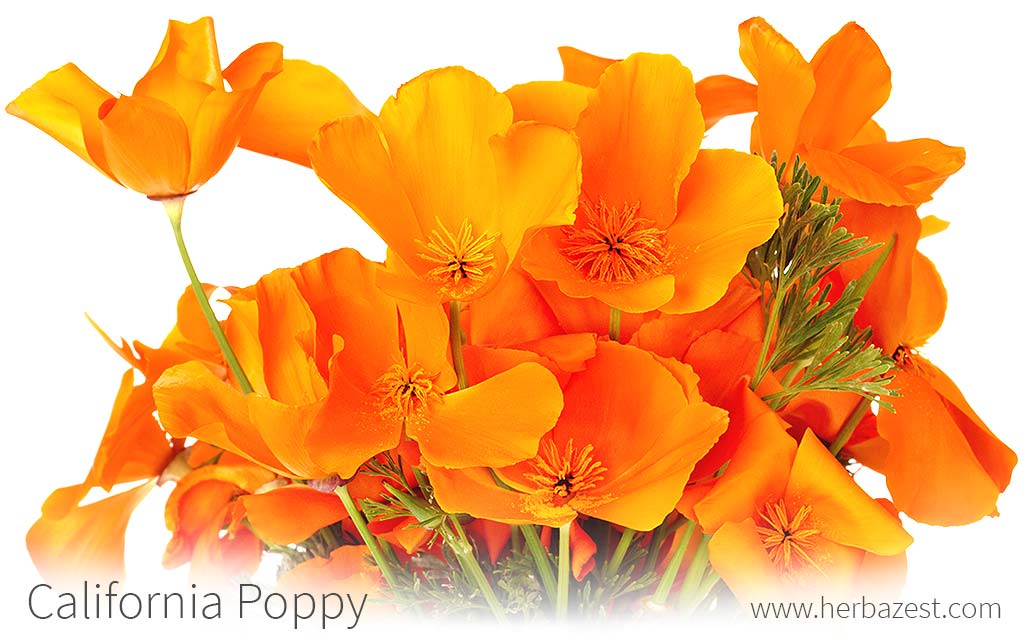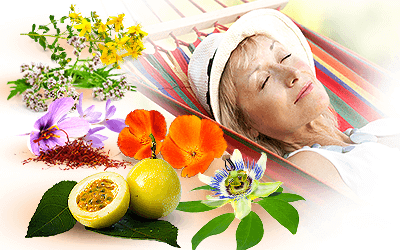A beloved symbol of the Golden State, the California poppy has been well-known for centuries because of its vibrant color and impressive ground coverage. Less well-known, however, is its long-standing history as a medicinal herb and even, for native populations of the area, its value as a food source.
California Poppy Medicinal Properties
Health Benefits of California Poppy
California poppy has been used for many different purposes throughout history, most importantly for:
Relieving anxiety symptoms. California poppy gently regulates the nervous system, affecting neuroreceptors and enzyme activity in the brain.
Inducing sleep and tranquility. This plant has gentle sedative effects.
California poppy has been historically considered gentle enough to treat psychological and behavioral problems in children, such as bed-wetting.
Native American herbal tradition frequently employed California poppy as a painkiller and sedative, particularly using its leaves and flowers to relieve toothaches.
How It Works
Researchers believe the alkaloids in California poppy, mainly californidine and escholtzine, are behind the plant's medicinal properties.1,2
These alkaloids have been shown to interact with γ-Aminobutyric acid type A (GABAA) receptors, which are responsible for inhibiting synaptic transmission in the central nervous system, inducing relaxation and decreasing anxiety.2
Despite the name similarity, the mechanism of action of California poppy is completely different from that of its cousin species, the opium poppy (Papaver somniferum). For this reason, it has a much smaller potential for toxicity or creating dependency.
Sedative and anxiolytic properties are also present in herbs like ashwagandha, lemon balm, and valerian.
California Poppy Cautions
Though the herb appears to be safe when taken for periods of three months or less, moderation should always be exercised.
- Medicinal action Anxiolytic, Sedative
- Key constituents Alkaloids
- Medicinal rating (2) Minorly useful plant
- Safety ranking Use with caution

How to Consume California Poppy
California poppy does not have known culinary uses. However, remedies are made from the aerial parts of the plant. They are largely used for promoting relaxation and sleep.
Natural Forms
Infusion. California poppy teas and tisanes are considered safe when used in moderation for three months or less. Many choose to enjoy them with mint or honey.
Herbal Remedies & Supplements
Liquid extract. Liquid extracts are the most common commercial preparation of California poppy.
Capsules. Supplements provide the most consistent dose of California poppy.
- Taste Bitter

Growing
Existing as both an annual and perennial depending on the climate, California poppy grows successfully in diverse regions.
Growing Guidelines
Though California poppy is tolerant to both drought and desert-like conditions, it flourishes in temperate climates where temperatures hover around 55°F (13°C).
The best soil for California poppy to grow is poor, with good drainage.
Seeds should be planted at a shallow depth during autumn or early winter months to allow for germination in the spring.
Harvesting California poppy is safe around the first frost of the following year. Transplanting is not advised.
- Life cycle Perennial
- Harvested parts Flowers
- Light requirements Full sun
- Growing habitat Arid or desert regions
- Planting time Fall
Additional Information
Plant Biology
Native to the west coast of North America, Californian poppies get their common name from the region that encompasses most of their native population, although they can be found as north as Canada (British Columbia province) and as far south as Mexico.
California poppy grows to approximately two feet (60 cm) tall. It has fine, deeply dissected leaves and remarkably bright blooms, with their four petals ranging in color from yellow or pink to orange and even red. These petals fall off after pollination occurs, and the subsequently-developing capsule releases several small seeds.
Classification
California poppy is the most widespread of the 15 species of the Eschscholzia genus found in California, and it is also part of the Papaveraceae family, composed mostly by herbs (less commonly shrubs or trees) with about 200 species across 25 genera. Another notable member of the also called poppy family is earth smoke (Fumaria officinalis).
Subspecies and Cultivars of California Poppy
With over 90 synonyms used to describe the flower, distinguishing firm subspecies of California poppy has been a matter of contention. Some experts say that there are two: E. californica californica, which grows throughout California and Oregon, and E. californica mexicana, or Mexican gold poppy, which is found in the Sonoran Desert.
For ornamental purposes, hybrids have been created with other plants to make award-winning cultivars such as 'Dali,' a red version; 'Lemon Bush,, which is pale yellow; and the 'Thai Silk Series,' which is a mix of different hues.
Historical Information
Long before the first European settlements appeared in the Pacific, Native American tribes used California poppies as both a food source and herbal medicine. The flower grew so abundantly that by the time Spanish sailors first glimpsed the coastline, they nicknamed it "the land of fire."
The genus Eschscholzia was named after Johann Friedrich Gustav von Eschscholtz, a Russian scientist and explorer who made a significant contribution to the classification of botanical and animal species along the Pacific Coast during the 19th century.
In 1903, shortly after California became a formal part of the United States, Eschscholzia californica was proclaimed the official state flower. To this day, April 6th is known as California poppy day.
Economic Data
Though still used as herbal medicine in some areas, California poppy is not cultivated for widespread commercial use except as an ornamental plant. Especially in native regions, where it is most prominent in the wild, it is considered an invasive species. Scientific research from the past few years, however, has revealed it to be an important part of the state's natural ecosystem, ideally making up 16% of the wild flora. In the U.S., herbal supplements that feature the flower are also increasing in popularity, opening a new potential market.
The Antelope Valley California Poppy Reserve is dedicated to the wild growth of this species, and it is illegal to damage it within state lines.
Popular Beliefs
The first Spanish settlers called it copa de oro (cup of gold), believing that the orange flowers of California poppies were particularly abundant in areas filled with the precious metal.
Other Uses
Gardening. Today, the most common use for California poppy is ornamental, making it a popular garden plant.
Sources
- California State Polytechnic University, The Genus Eschscholzia: California Poppies and their Relatives
- University of Hawaii, Papaveraceae
- University of Wisconsin, Extension, Master Gardener Programm, California Poppy, Eschscholzia californica
- Backyard Medicine, p. 73
- Encyclopedia of Herbal Medicine, pp. 206-7
- Medicinal Plants of the World, p. 138
- Royal Horticultural Society, Plant Selector: Eschscholzia californica
Footnotes:
- Journal of Natural Products. (2006). Alkaloids from Eschscholzia californica and their capacity to inhibit binding of [3H]8-Hydroxy-2-(di-N-propylamino)tetralin to 5-HT1A receptors in Vitro. Retrieved January 15, 2024, from: https://pubmed.ncbi.nlm.nih.gov/16562853/
- Biochemistry Research International. (2015). Modulatory Effects of Eschscholzia californica Alkaloids on Recombinant GABAA Receptors. Retrieved January 15, 2024, from: https://www.ncbi.nlm.nih.gov/pmc/articles/PMC4609799/






